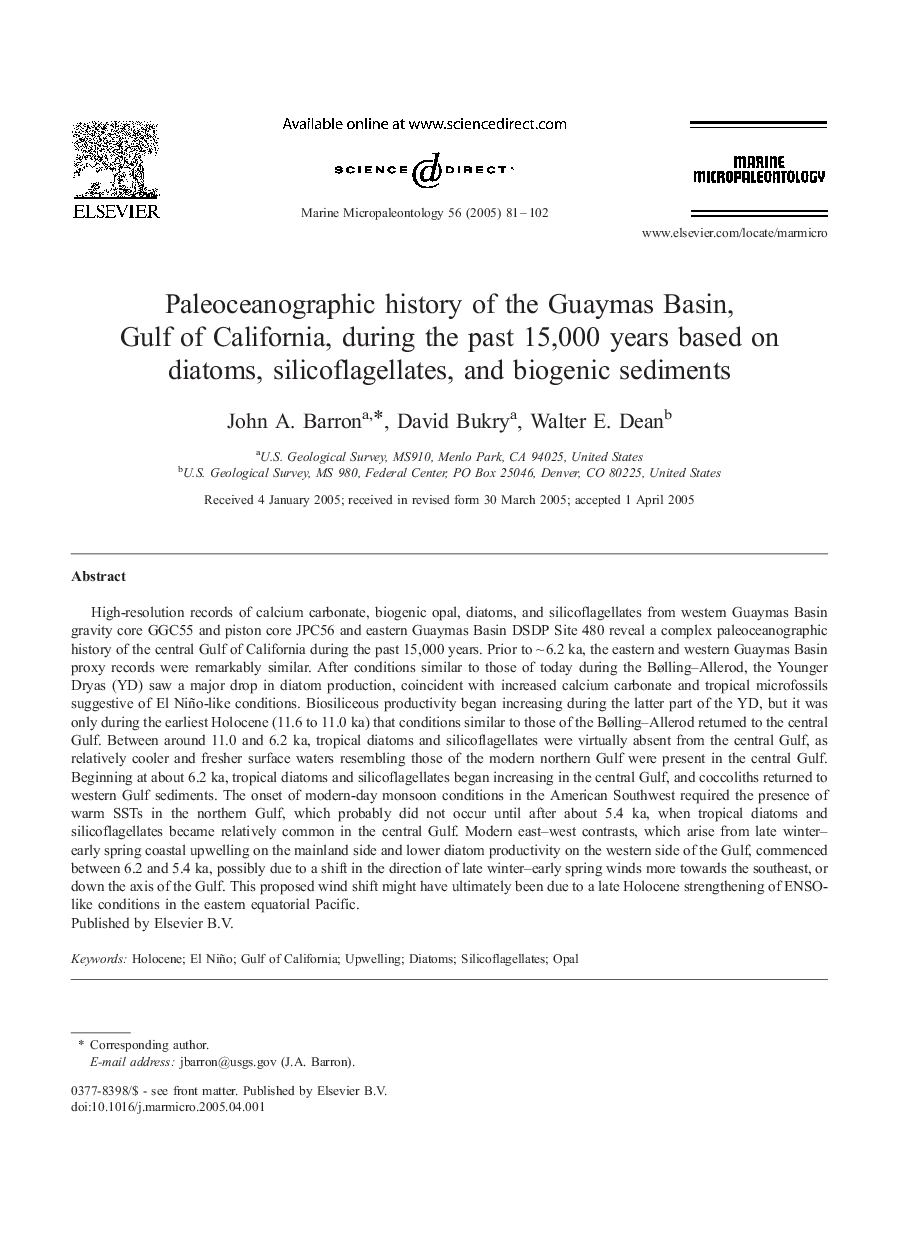| کد مقاله | کد نشریه | سال انتشار | مقاله انگلیسی | نسخه تمام متن |
|---|---|---|---|---|
| 9539635 | 1642236 | 2005 | 22 صفحه PDF | دانلود رایگان |
عنوان انگلیسی مقاله ISI
Paleoceanographic history of the Guaymas Basin, Gulf of California, during the past 15,000 years based on diatoms, silicoflagellates, and biogenic sediments
دانلود مقاله + سفارش ترجمه
دانلود مقاله ISI انگلیسی
رایگان برای ایرانیان
کلمات کلیدی
موضوعات مرتبط
مهندسی و علوم پایه
علوم زمین و سیارات
فسیل شناسی
پیش نمایش صفحه اول مقاله

چکیده انگلیسی
High-resolution records of calcium carbonate, biogenic opal, diatoms, and silicoflagellates from western Guaymas Basin gravity core GGC55 and piston core JPC56 and eastern Guaymas Basin DSDP Site 480 reveal a complex paleoceanographic history of the central Gulf of California during the past 15,000 years. Prior to â¼Â 6.2 ka, the eastern and western Guaymas Basin proxy records were remarkably similar. After conditions similar to those of today during the Bølling-Allerod, the Younger Dryas (YD) saw a major drop in diatom production, coincident with increased calcium carbonate and tropical microfossils suggestive of El Niño-like conditions. Biosiliceous productivity began increasing during the latter part of the YD, but it was only during the earliest Holocene (11.6 to 11.0 ka) that conditions similar to those of the Bølling-Allerod returned to the central Gulf. Between around 11.0 and 6.2 ka, tropical diatoms and silicoflagellates were virtually absent from the central Gulf, as relatively cooler and fresher surface waters resembling those of the modern northern Gulf were present in the central Gulf. Beginning at about 6.2 ka, tropical diatoms and silicoflagellates began increasing in the central Gulf, and coccoliths returned to western Gulf sediments. The onset of modern-day monsoon conditions in the American Southwest required the presence of warm SSTs in the northern Gulf, which probably did not occur until after about 5.4 ka, when tropical diatoms and silicoflagellates became relatively common in the central Gulf. Modern east-west contrasts, which arise from late winter-early spring coastal upwelling on the mainland side and lower diatom productivity on the western side of the Gulf, commenced between 6.2 and 5.4 ka, possibly due to a shift in the direction of late winter-early spring winds more towards the southeast, or down the axis of the Gulf. This proposed wind shift might have ultimately been due to a late Holocene strengthening of ENSO-like conditions in the eastern equatorial Pacific.
ناشر
Database: Elsevier - ScienceDirect (ساینس دایرکت)
Journal: Marine Micropaleontology - Volume 56, Issues 3â4, August 2005, Pages 81-102
Journal: Marine Micropaleontology - Volume 56, Issues 3â4, August 2005, Pages 81-102
نویسندگان
John A. Barron, David Bukry, Walter E. Dean,